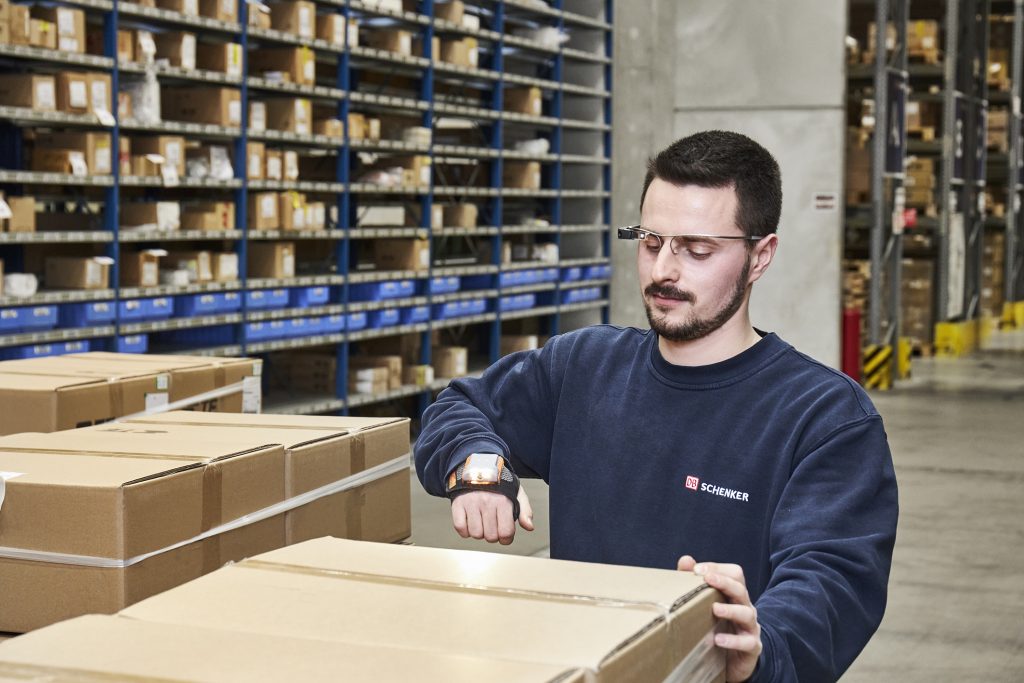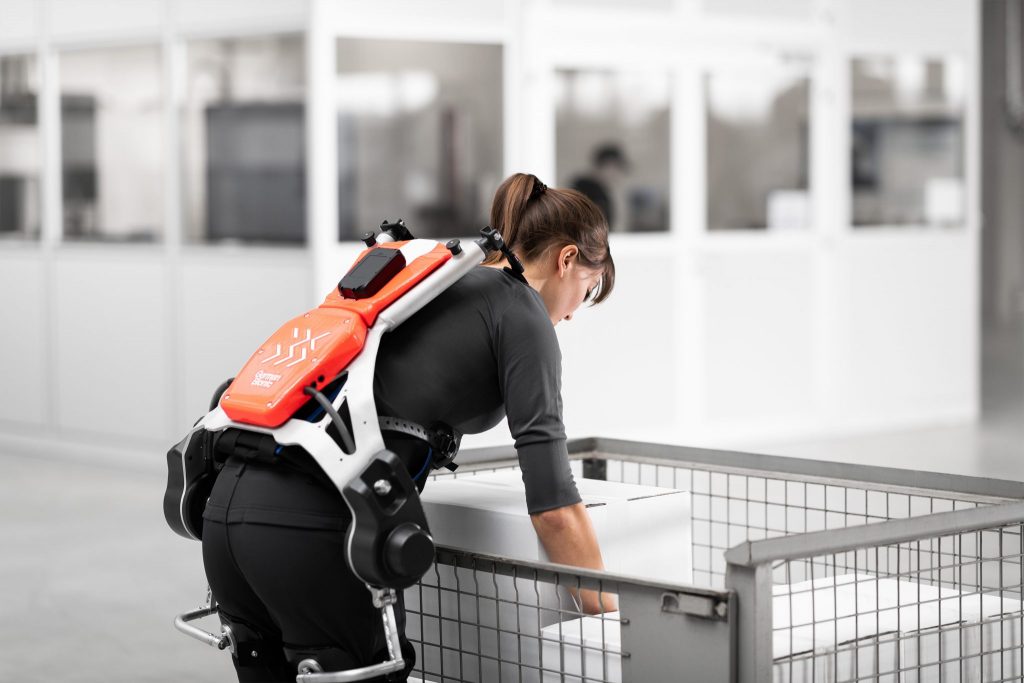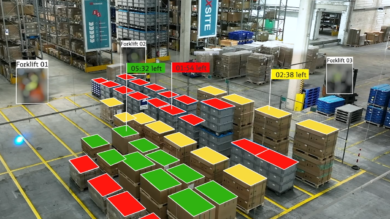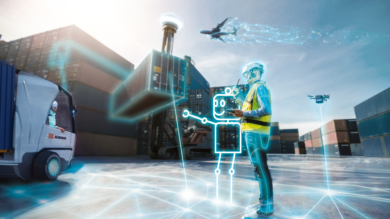The first warehouse wearables can be traced back to the 1990s, when advancements in speech recognition technology meant voice-directed warehousing, or voice picking, was made possible for the first time. Voice picking, which is still widespread in warehouse operations today, uses voice prompts to instruct warehouse employees in their tasks – for example by directing them to their next picking location. Employees generally wear a headset with fitted microphone, which connects to the voice application on a mobile device.
Since then, wearable devices have expanded and developed to include scanning gloves, picking glasses and even exoskeletons, which assist workers with heavy loads. These devices can increase warehouse efficiency by speeding up processes. A study by Harvard Business Review showed that a technician was able to improve his performance by 34 percent when using an augmented reality headset for the first time.
Besides boosting productivity, warehouse wearables have also been praised for their ease-of-use and ergonomic qualities. With the usage of wearable and mobile technology predicted to increase by 43 percent in the next five years, according to the 2020 MHI Annual Industry Report, it is time to embrace the use of wearables in the workplace.

Smart picking with glasses and scanning gloves
After voice picking, two of the most popular warehouse wearables are smart glasses and scanning gloves, which can be used either separately or in combination to improve efficiency in operational processes. The scanning glove acts as a portable and easy-to-use barcode scanner, while the smart glasses typically use augmented reality to project information on the current task into the user’s field of vision.
When used in combination, the components can communicate both with each other and with the warehouse management system. Via this Internet of Things network, an innovative and handsfree solution is created which maximizes productivity while minimizing error rates. The use of such wearable devices also has benefits within sustainability, since data is no longer recorded manually, and less paper is printed.
Global logistics provider DB Schenker has successfully implemented smart glasses and scanning gloves in order-picking operations in Germany. The gloves, which are provided by ProGlove, are easily activated by pressing a button on the glove, while the Google Glass provided by Picavi are controlled via a battery pack, which weighs just 200 grams and is attached to the employee’s belt. After testing the glasses at a warehouse in Bremen, DB Schenker reported a 10 percent increase in efficiency compared to the previous handheld scanners. Employees also praised the ergonomic and easy-to-use design. Following successful implementation at various sites, the company now intends to implement the smart picking solution as a standard procedure across multiple locations.

Relieving heavy loads with exoskeletons
A more unusual device is the exoskeleton, or ‘outer skeleton’, which is a wearable robot used to assist warehouse staff with physically demanding tasks. Designed to be used in addition to ergonomically designed workstations, exoskeletons use electro-mechanical assistance to support employees in lifting and rotating their bodies. The individual simply straps the exoskeleton on when lifting heavy loads in order to support repetitive movement sequences and relieve stress on their back muscles.
After testing exoskeletons at several logistics locations in Germany, DB Schenker confirmed that the feedback from employees was positive and the use of exoskeletons could lead to long-term health benefits. During the pilot project, employees focused on the picking and sequencing of packages weighing up to 15 kilograms. The logistics company noted that while general lifting tasks can be delegated to forklifts or robots, some specific lifting sequences are still too complex to be carried out entirely by machines. Exoskeletons have the potential to combine the power of a machine with the motor competence of humans.
“Warehouse operations will always need people. By augmenting human capabilities and capacity with technology, we can improve safety, productivity and quality.”
Humans and machines working in harmony
Voice recognition software such as Siri or Alexa and recent inventions such as Google Glass were originally developed and marketed with consumers in mind but also have huge implications for businesses today – particularly within the logistics industry. Although consumer demand will continue to steer the progress of such products, the real driver for widespread use will be the integration of wearable devices in business operations.
As the technology becomes cheaper and more accessible, the use of wearables will most likely become mainstream in many industrial applications – by established companies and start-ups alike. Not only does this help to serve customers better and give companies a competitive advantage, but a tech-savvy company can also attract the right talent, and existing employees have the chance to develop their skillset further.
To support successful integration and ongoing use in the future, warehouse wearables most prove their practicality, adjustability and effectiveness – both in terms of improving processes and reducing costs. Businesses will need to ensure return on their investment, and should ask themselves some important questions: Does it fit with our processes? Will it work for our employees? Is it really needed?
The device should be fully tested first, and the implementation phase and adjustment period should be done holistically and with the full support of IT, to ensure a smooth and successful integration. Rather than replacing human labor, machines and wearable devices should be incorporated in existing processes and enhance an employee’s daily tasks, giving them more time for higher value and more rewarding work. In this way, humans and smart machines can work in harmony to improve productivity and future-proof organizations for the next decade.
Published: December 2020










